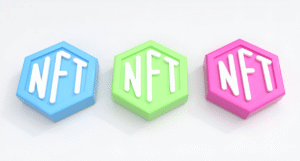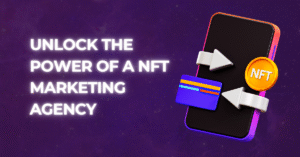The Future of NFTs: Will They Make a Comeback?

NFT, an acronym for non-fungible token, dominated the digital space in 2021. With million-dollar digital artwork sales, celebrity endorsements and eye-popping deals, NFTs fast evolved to be something more than tech buzzwords. However, like all trends, the market for NFT cooled down in the following years and many have started to wonder if NFT will ever recover?
This article looks at where NFTs came from, the present state of things and what we can learn, now that the dust has settled, about whether there’s still a future for NFTs, or if it was just a fad like Beanie Babies.
What Are NFTs, and How Did They Become So Popular?
To figure out what the possible resurgence of NFTs might be, we need to look back and ask what they were in the first place. Non-fungible tokens are one-of-a-kind digital assets asserted on a blockchain, which is mostly the crypotcurrency Ethereum. Unlike cryptocurrencies such as Bitcoin, which are interchangeable and hold the same value, NFTs are proof of ownership of something unique, be it digital art or a collectible, music or clothes, virtual real estate or even a house.
The original excitement around NFTs stemmed from their claim to provide scarcity and ownership in a digital world, where everything can be copied. Artists like Beeple sold digital art for millions, and collections like CryptoPunks and Bored Ape Yacht Club turned into the new status symbols of our times.
Why Did NFT-Interest Die?
After getting off to a roaring start, NFTs flamed out for a few reasons:
Market Saturation
The huge stampede of NFT projects resulted in oversupply. As numberless collections washed over the market, the novelty waned, and it became difficult to sift valuable tokens from worthless one.
Declining Prices
The market for NFTs (non-fungible tokens) turned into a bubble in 2021, with the values of NFTs crashing as supply overwhelmed what could be actually done with them and speculative dealing. There was a further blow to everyone’s morale in 2016: Collections that used to sell for millions of dollars sold for next to nothing, and everyone started to panic about the market.
Economic Conditions
Economic uncertainty, perceived inflation, and an overall bearish cryptocurrency market also affected NFTs. Investors turned away from more speculative assets, like NFTs, and toward safer investments.
Scams and Counterfeits
The NFT space was dirty and overcrowded with scams, sketchy tokens, and fake digital art. Then there were these problems that eroded confidence and scared off new buyers.
Misunderstanding Utility
A lot of NFTs had little in the way of utility or use beyond speculative trading and the sense of ownership and status that came with owning digital bragging rights. With no practical use, interest fizzled.
The Current State of NFTs
The hype has died down some, but NFTs have not gone away. The market is in a recalibration phase. Today, creatives and developers are working on cool utilities and applications for NFTs, taking the tech beyond collectibles and art.
Integration into Gaming
Gaming also looks set to benefit from NFTs with ideas such as play-to-earn and virtual collectibles. Games such as Gods Unchained and Axie Infinity have made NFTs core to gameplay, allowing users to trade in-game assets.
Brand Partnerships
Nike, Adidas and Gucci are among the big brands using NFTs to design virtual clothes and experiences. The goal of these collaborations is to fuse luxury, gaming and lifestyle in a metaverse.
Membership and Access Value
They are also being used as digital tickets or passes for all kinds of exclusive events or access to communities. For example, Gary Vaynerchuk’s VeeFriends project gives token holders ticketed access to networking events and benefits.
Sustainability Efforts
Blockchain technology was denounced for environmental damage caused by power-hungry mining. But now that Ethereum is transitioning from a proof-of-work system to a proof-of-stake system (which minimizes its energy consumption by more than 99 percent), NFTs are becoming greener — which could, in theory, attract a more conscientious consumer.
Cultural Value
Even with criticism, some NFT collections are closely tied to digital culture. CryptoPunks, works by Beeple and others have continued to be widely hailed as the predecessors in the space.
Will NFTs Make a Comeback?
Predicting the future of NFTs isn’t a science, but there are some hopeful signs of a rebound on the horizon.
Advancing Technology
The tech behind NFTs is developing, with efficiency, interconnectivity and user-friendly systems. Other use cases outside of NFTs bring added indirect utility to the NFT use case table thanks to blockchain’s applications in finance, supply chains and identity.
Utility Over Hype
NFTs that are going to succeed in the long term need to provide value beyond hype. Real-world applications in the real estate sector, digital identity verification, and gaming have given NFTs a bit more meat on the bone, reducing the argument that they only appealed to speculation.
New Generations of Buyers
Millennials and other younger generations have already been exposed to a digital-first landscape and it follows that they would find value in digital ownership. And for them, virtual collectibles, metaverse land or even digital memberships have real value.
Institutional Adoption
Eventually, brands and financial institutions and governments may have other, practical uses for NFTs, such as the secure storage of documents, or the transfer of property. This kind of institutional sponsorship could legitimize the veracity the technology and restore it to relevance.
Regulation and Security
The NFT world could use some regulation to clamp down on scams and create more transparency. A safer market place creates more confidence which leads to more users engaging.
Obstacles to Revival
But there are obstacles the NFT market must clear for that momentum to take back off:
Public Skepticism: Trust will have to be regained after speculation losses during the NFT boom.
Competition in the Crypto Space: As the blockchain technology evolves so does the crypto space and in turn NFTs have to compete with other decentralised products and services.
Market Oversight: NFTs might be affected if there are regulatory crackdowns on cryptocurrencies as they operate in the same environment.
How to Start Investing in the Future of NFTs
If you are a creator or a business or a collector, you can prepare and take advantage of the potential comeback:
Focus on Value
Search for NFTs or projects that provide clear utility, whether it’s in gaming, access to communities or real-world usage on a network.
Research Thoroughly
Say no to speculative, hype-fueled NFTs. Review project roadmaps, creators’ backgrounds and community feedback before investing.
Stay Updated
To identify trends, follow NFT marketplaces as well as blockchain innovations and thought leaders in the space.
Diversify
If you are investing, don’t forget to diversify your portfolio.” Diversify into assets that are less speculative than NFTs for a more balanced approach to risk.
Signs of a Possible Comeback in 2024 and Beyond
The groundwork for NFTs is too important to ignore. From digital ownership to gaming, use cases are spread across industries. Taking into account developments such as green blockchain, better regulation and more acceptance by the mainstream the NFT market may recover again.
As with any technology, there is ebb and flow. NFTs might not be making daily headlines as they were in 2021, but their story is far from written.





